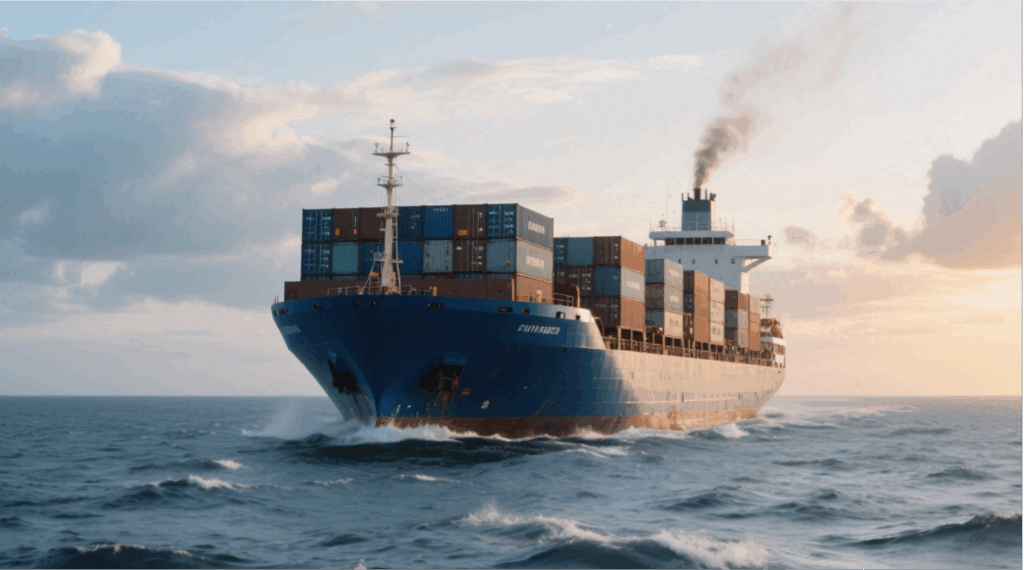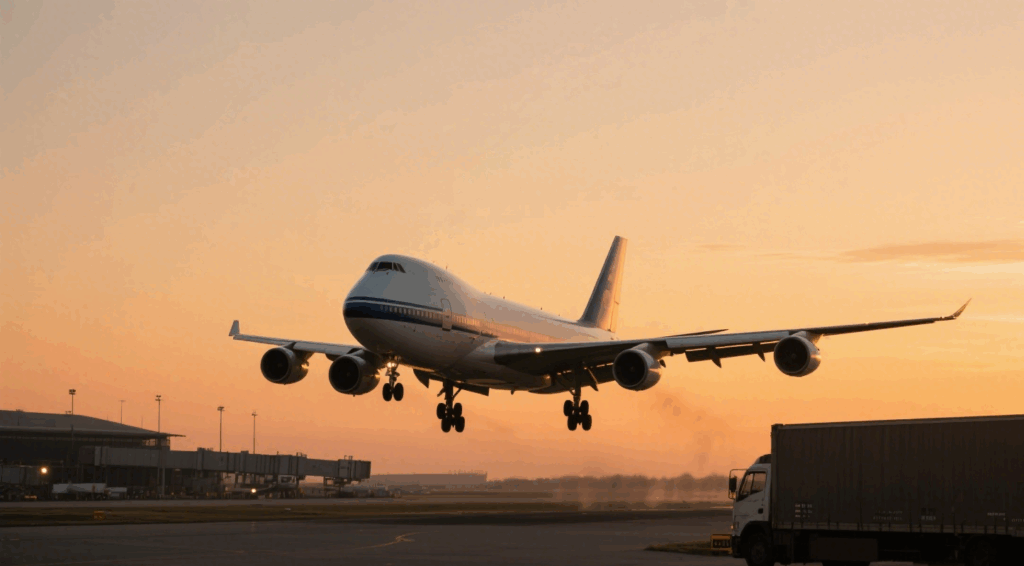- By Della tj
- October 16, 2025
- Sea Freight, Shipping
Fast sea freight from China to Netherlands is one of the most efficient and cost-effective shipping options for global traders. As China remains a manufacturing powerhouse and the Netherlands a major European import hub, sea freight connects both economies through stable maritime routes. This guide explains every aspect — from costs, container choices, and documentation, to case examples and cost-saving strategies — to help you manage your shipments effectively.
Overview of Sea Freight Between China and the Netherlands
Shipping goods from China to the Netherlands by sea covers a distance of approximately 18,000 km. The most common routes connect major Chinese ports such as Shanghai, Ningbo, Shenzhen, and Qingdao to Rotterdam, the largest port in Europe. On average, transit times range from 25 to 35 days, depending on the route, carrier schedule, and weather.
Key Advantages:
- Economical for large volumes
- Stable freight schedules
- Multiple vessel departures weekly
- Suitable for bulk, industrial, or commercial goods
Despite longer transit times compared to air freight, sea shipping remains dominant due to its scalability and lower cost per unit.
Major Ports and Routes
Chinese Departure Ports:
- Shanghai Port – the world’s busiest container port
- Shenzhen Port – efficient for electronics and machinery
- Ningbo Port – ideal for textiles and industrial components
- Qingdao Port – handles heavy equipment and bulk cargo
Dutch Arrival Ports:
- Port of Rotterdam – handles over 90% of China–Netherlands ocean freight
- Port of Amsterdam – secondary hub for specialized cargo
- Vlissingen Port – alternative entry for smaller shipments
Typical Routes:
| Route | Average Transit Time | Vessel Frequency | Main Cargo Types |
|---|---|---|---|
| Shanghai → Rotterdam | 30 days | 3–5 departures/week | Furniture, textiles |
| Shenzhen → Rotterdam | 28 days | 4–6 departures/week | Electronics |
| Ningbo → Amsterdam | 32 days | 2–3 departures/week | Industrial goods |
Transit Time and Speed Optimization
Transit time for fast sea freight from China to Netherlands depends on:
- Port pair (Shanghai–Rotterdam is faster than Qingdao–Amsterdam)
- Vessel speed and route efficiency
- Customs clearance duration
Tips to Speed Up:
- Use direct shipping lines with no transshipment.
- Book early during peak seasons.
- Work with freight forwarders that offer priority loading options.
- Prepare customs documents in advance to avoid clearance delays.
By optimizing these factors, transit times can be shortened by 3–5 days, improving overall logistics efficiency.
Cost Structure and Freight Calculation
The cost of sea freight depends on container type, route, and shipment size. Below is an estimated cost comparison:
| Container Type | Average Cost (USD) | Capacity | Suitable For |
|---|---|---|---|
| 20ft FCL | $850–$1,100 | 28 m³ | Medium cargo |
| 40ft FCL | $1,450–$1,750 | 58 m³ | Large cargo |
| LCL | $35–$50/m³ | Flexible | Small shipments |
Additional Fees:
- Port handling: $100–$150
- Customs documentation: $50–$100
- Insurance (optional): 0.3–0.5% of cargo value
By comparing costs across carriers, shippers can identify the most economical option while maintaining timely delivery.
Case Examples: Sea Freight from China to the Netherlands
Case 1: Furniture Export from Foshan to Rotterdam
- Cargo: 1×40ft container (furniture)
- Route: Shenzhen → Rotterdam
- Cost: $1,480
- Transit time: 29 days
- Result: Saved 20% compared to air freight, arrived 3 days earlier than scheduled.
Case 2: Electronics from Ningbo to Amsterdam
- Cargo: 12 CBM LCL (small appliances)
- Route: Ningbo → Amsterdam
- Cost: $42/m³ (total $504)
- Transit time: 31 days
- Result: Reliable LCL service with online tracking, customs cleared within one day.
Required Documents for Sea Freight
Proper documentation ensures smooth shipping and customs clearance. The essential documents include:
- Bill of Lading (B/L) – issued by the carrier confirming cargo receipt.
- Commercial Invoice – details product descriptions and values.
- Packing List – outlines weights, dimensions, and packaging type.
- Certificate of Origin – required for trade compliance.
- Import Declaration – necessary for customs in the Netherlands.
Completing documents accurately can save up to 2–3 days of clearance time.
Best Practices for Efficient Shipping
To make sea freight fast and trouble-free:
- Choose the nearest loading port in China.
- Use professional freight forwarders experienced with the Netherlands.
- Book early during peak export seasons.
- Consolidate shipments to reduce costs.
- Insure valuable goods for added protection.
Additionally, using smart logistics software helps track containers in real time and optimize supply chain performance.
Future Outlook for China–Netherlands Sea Freight
Trade between China and the Netherlands is projected to grow steadily, driven by e-commerce expansion, renewable energy materials, and consumer goods. Shipping companies continue to enhance their fleets and add more direct routes. Moreover, eco-friendly shipping using LNG-powered vessels and digital port systems will further reduce transit time and emissions, making sea freight both faster and greener.
Conclusion
In conclusion, fast sea freight from China to Netherlands is the most strategic choice for importers balancing time, reliability, and cost. It bridges the gap between slow traditional ocean freight and expensive air transport. By planning routes carefully, booking in advance, and ensuring documentation accuracy, businesses can achieve 20–30-day transit times at a fraction of air freight costs.
For consistent results, partner with a professional freight forwarder who can provide transparent pricing, optimized routing, and customs expertise. This approach ensures your goods reach the Netherlands efficiently, safely, and on schedule every time.
- Consult TJ China Freight Forwarding for the lowest quote. They will provide you with reliable, cost-effective service.
FAQ:
Q1.How long does sea freight from China to the Netherlands usually take?
The average sea freight transit time is 25–35 days, depending on the port of departure, vessel schedule, and weather conditions.
Q2.What are the busiest ports in the Netherlands for Chinese imports?
Rotterdam is the main entry port, handling most shipments. Smaller volumes may also go through Amsterdam or Vlissingen for specific routes or cargo types.
Q3.Is it possible to ship personal belongings via sea freight from China?
Yes. Many forwarders provide LCL (Less than Container Load) options for personal or small business shipments.
Q4.What documents are required for customs clearance in the Netherlands?
You typically need a Bill of Lading, Packing List, Commercial Invoice, and Import Declaration (SAD form). Some goods may also require certificates or permits.
Q5.Can I track my shipment during ocean transport?
Absolutely. Most carriers and forwarders provide real-time tracking portals using the Bill of Lading number or container ID.





